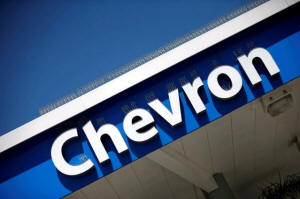|
The
weak results from two of the world's largest oil producers come
as the energy industry is at a crossroads, trying to survive in
an era of low prices, which many analysts see as the new status
quo, while funding expensive growth projects crucial for
long-term survival.
"It's a challenging environment for the integrated" oil
producers, said Brian Youngberg, an energy analyst with Edward
Jones. "The key is to manage the cash flow as best they can and
continue to execute on projects, which they do appear to be
doing."
Exxon, the world's largest publicly traded oil producer, shocked
Wall Street as its quarterly profit missed expectations, sending
its shares down as much as 4.5 percent on Friday.
Its profit from producing oil and gas fell about 85 percent to
$294 million. In the United States, where Exxon is the largest
natural gas producer and a major oil producer, the company lost
money.
Exxon executives defended their business model, saying they have
the financial flexibility to do many things, including large
acquisitions, while maintaining their dividend. The company did
cut most of its share buyback program earlier this year.
Standard & Poor's downgraded the company's vaunted "AAA" credit
rating to "AA+" earlier this year, as dividends and capital
expenditures were exceeding cash flow.
This month Exxon said it would pay more than $2.5 billion in
stock for InterOil Corp <IOC.N>, expanding its push into the
Asian liquefied natural gas market.
Chevron, the second-largest U.S.-based oil producer, reported
its largest quarterly loss in 15 years, with Chief Executive
Officer John Watson acknowledging the company is in the midst of
an "ongoing adjustment to a lower oil price world."
The company lost $1.47 billion in the quarter, compared with a
net profit of $571 million in the year-ago period.
Still, Chevron's results beat expectations, with analysts
confident in the company's ability to cut costs as it brings
several large projects online in the next few years.
The results from both companies came after disappointing results
from European peers Shell and BP earlier this week.
'RESOLUTE' ON DIVIDENDS
The weak results could force the companies to reconsider their
long-held policies of maintaining and growing their quarterly
dividends, especially after ConocoPhillips <COP.N>, Marathon Oil
Corp <MRO.N> and others cut their payouts earlier this year.
So far during this two-year downturn Exxon and Chevron have held
their dividends as sacrosanct, while curbing stock repurchases.
Chevron Chief Financial Officer Pat Yarrington sidestepped
questions about a potential dividend increase later this year on
the company's quarterly conference call, saying only the board
of directors "fully understands the value of a dividend
increase."
Jeff Woodbury, Exxon's head of investor relations, said on a
call with investors that the company was "resolute in our
commitment to pay a reliable and growing dividend."
After providing bumper profits early in the downturn as cheap
crude slashed their costs, refiners saw the income erode this
quarter on fuel oversupply. The refining industry has been
hammered of late by growing fuel inventories and weak demand,
denting its profitability.
The oversupply has led to so-called run cuts, in which refiners
trim the amount of crude they process. Exxon processed 4 percent
less crude in the quarter than a year ago and produced less
gasoline.
"Once the product tanks are full, as they are now, and you even
have floating product storage in places like New York harbor,
then you know that the situation is bad. You have to cut runs,"
said Oystein Berentsen, managing director for crude oil trading
firm Strong Petroleum in Singapore.
Exxon shares dropped 1.8 percent to $88.57 while Chevron eased
0.3 percent to $102.06.
(Additional reporting by Jarrett Renshaw in New York; Editing by
Terry Wade and Jeffrey Benkoe)
[© 2016 Thomson Reuters. All rights
reserved.] Copyright 2016 Reuters. All rights reserved. This material may not be published,
broadcast, rewritten or redistributed.
 |
|





